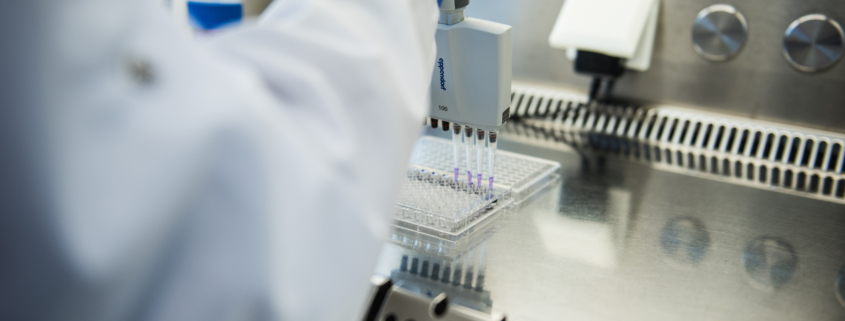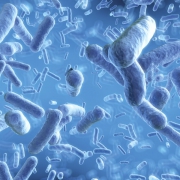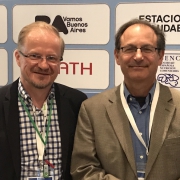Bacterial genes lead researchers to discover a new way that lactic acid bacteria can make energy and thrive in their environments
Lactic acid bacteria are an important group of bacteria associated with the human microbiome. Notably, they are also responsible for creating fermented foods such as sauerkraut, yogurt, and kefir. In the past two decades, culture-independent techniques have allowed scientists to sequence the genomes of these bacteria and discover more about their capabilities.
Researchers studying a type of lactic acid bacteria called Lactiplantibacillus plantarum found something unexpected: they contained genes for making energy in a way that had not been previously documented. Generally, living organisms obtain energy from their surroundings either by fermentation or respiration. L. plantarum have long been understood to obtain energy using fermentation, but the new genetic analysis found they had additional genes that were suited to respiration. Could they be using both fermentation and respiration?
ISAPP board member Prof. Maria Marco is a leading expert on lactic acid bacteria and their role in fermented foods and in human health. In her lab at University of California Davis, she decided to investigate why L. plantarum had genes equipping it for respiration. Her group recently published findings that show a new type of “hybrid” metabolism used by these lactobacilli.
Here is a Q&A with Prof. Marco about these exciting new findings.
What indicated to you that some of the genes in L. plantarum didn’t ‘belong’?
Organisms that use respiration normally require an external molecule that can accept electrons, such as oxygen. Interestingly, some microorganisms can also use solid electron acceptors located outside the cell, such as iron. This ability, called extracellular electron transfer, has been linked to proteins encoded by specific genes. L. plantarum had these genes, even though this species is known to use fermentation. We first learned about their potential function from Dr. Sam Light, now at the University of Chicago. Sam discovered a related pathway in the foodborne pathogen Listeria monocytogenes. Sam came across our research on L. plantarum because we previously published a paper showing that a couple of genes in this pathway are switched on in the mammalian digestive tract. We wondered what the proteins encoded by these genes were doing.
How did you set out to investigate the metabolism of these bacteria?
We investigated this hybrid metabolism in a variety of ways. Using genetic and biochemical approaches we studied the extent to which L. plantarum and other lactic acid bacteria are able to use terminal electron acceptors like iron. Our collaborators at Lawrence Berkeley National Lab and Rice University contributed vital expertise with their electrochemistry experiments, including making fermented kale juice in a bioelectrochemical reactor.
What did you find out?
We discovered a previously unknown method of energy metabolism in Lactiplantibacillus plantarum. This hybrid strategy blends features of respiration (a high NAD+/NADH ratio and use of a respiratory protein) with features of fermentation (use of endogenous electron acceptors and substrate-level phosphorylation).
We verified that this hybrid metabolism happens in different laboratory media and in kale juice fermentations. We also found that, in the complex nutritive environment of a kale juice fermentation, this hybrid metabolism increases the rate and extent of fermentation and increases acidification. Within the ecological context of the fermented food, this could give L. plantarum a fitness advantage in outcompeting other microorganisms. This could potentially be used to change the flavor and texture of fermented foods.
This discovery gives us a new understanding of the physiology and ecology of lactic acid bacteria.
Are there any indications about whether this energy-making strategy is shared by other lactic acid bacteria?
Some other fermentative lactic acid bacteria also contain the same genetic pathway. It is likely that we are just at the tip of the iceberg learning about the extent of this hybrid metabolism in lactobacilli and related bacteria.
Your finding means there is electron transfer during lactic acid bacteria metabolism. What does this add to previous knowledge about bacterially-produced ‘electricity’?
Certain soil and aquatic microbes have been the focus of research on bacterially-produced electricity. We found that by giving L. plantarum the right nutritive environment, it can produce current to the same level as some of those microbes. We believe there is potential to apply the findings from our studies to better inform food fermentation processes and to guide fermentations to generate new or improved products. Because strains of L. plantarum and related bacteria are also used as probiotics, this information may also be useful for understanding their molecular mechanisms of action in the human digestive tract.
How might this knowledge be applied in practice?
Our findings can lead to new technologies which use lactic acid bacteria to produce healthier and tastier fermented foods and beverages. Because this hybrid metabolism leads to efficient fermentation and a larger yield, it could also help minimize food waste. We plan to continue studying the diversity, expression, and regulation of this hybrid metabolism in the environments in which these bacteria are found.















